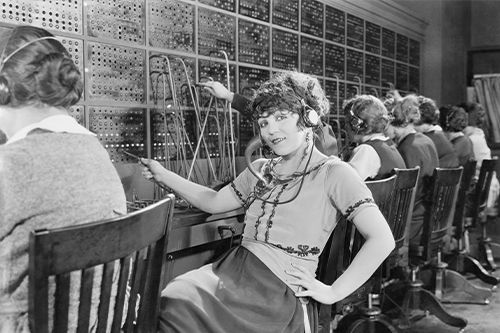
As companies grow and expand, they are bound to face obstacles in their approach towards interdepartmental communication and collaboration. And despite good intentions, many workplaces still struggle with clearing these obstacles. Success requires a carefully planned approach, a robust communication toolset, and an understanding of the flaws that undermine the collaboration process. Fortunately, there are many strategies that can improve collaboration and communication within your organization. In this post, we’ll discuss top interdepartmental communication and collaboration techniques, as well as the frequent failure points and how to fix them.

To foster successful interdepartmental communication, it is important to establish an open communication channel while considering the advantages and drawbacks of utilizing multiple channels. Multiple channels, such as email, messaging apps, video conferencing, and project management software, offer diverse options for connectivity and collaboration. They cater to different communication needs and allow team members to choose methods that suit their preferences and work style. These channels can enhance connectivity, flexibility, and collaboration within the organization.
However, it is crucial to be aware of the potential challenges associated with utilizing multiple communication channels. Information fragmentation can occur as important details may become scattered across different platforms, making it challenging to locate and track them efficiently. Moreover, managing multiple channels can add complexity and confusion, particularly when team members are not aligned on their appropriate usage. Miscommunication and duplication of messages are also possible risks, given the higher chance of messages getting lost, duplicated, or misinterpreted across various platforms.
To navigate these challenges, it is important to establish clear guidelines and protocols regarding the usage of different channels. This includes defining the purpose and appropriate usage of each channel and promoting consistency in communication practices. Regular monitoring and synchronization between channels can help mitigate the risk of information fragmentation and improve overall efficiency. By fostering effective communication practices and maintaining a balance between multiple channels, organizations can maximize the benefits while minimizing the potential drawbacks of diverse communication options.

People often hold back information, whether out of fear of losing control or simply because they’re not sure how to share effectively. Workshops and team-building activities can help bring employees together and promote collaboration. When team members realize that they need one another to achieve their goals, interdepartmental communication and collaboration become much more successful. Be open to feedback and suggestions from your team on ways to improve, and don’t be afraid to revamp or modify your processes if they’re not working.

Failure to provide clear direction can be a significant point of interdepartmental communication breakdown. When tasks and projects are not structured explicitly, teams may misunderstand their goal. As a result, team members may work with different objectives in mind, which leads to confusion and frustration. Providing clear direction on each project will help reduce confusion and improve teamwork. Then, set up milestones and deadlines to help keep the team on track. By doing so, you can foster a sense of accountability and ownership, and develop a culture of trust that inspires collaboration.
Another common failure point of interdepartmental communication and collaboration is a lack of trust between departments. This can occur when teams feel like they are not being heard or their opinions are not valued. To build trust, companies can encourage interdepartmental training and shadowing, where team members have the chance to understand the challenges and strengths of other departments. By promoting a culture of learning and mutual respect, companies can foster trust and encourage collaboration.

Regular meetings help strengthen interdepartmental communication by giving employees a chance to connect and discuss projects, expectations, and responsibilities. These meetings ensure that everyone understands the big picture and their respective roles and responsibilities to achieve the collective goals. They also help teams to identify problems, share ideas, and update their progress.
Face-to-face interactions are crucial despite the current trend of working remotely. In-person interactions facilitate a deep understanding of nonverbal cues and better communication. Virtual face-to-face interactions such as video conferencing can also go a long way towards promoting interdepartmental communication and cultivating collaboration.

Collaboration is an acquired skill, one that can be improved by regular practice and development. Ensure that your team receives training in teamwork, collaboration, and communication skills. Prioritize inclusivity, diversity, and collaboration across the company, and encourage everyone to share their strengths and expertise so they can work together more effectively. You can also schedule regular team-building activities and events that help improve communication and working relationships. As a result, your team will grow closer and more cohesive, and they will work better together in the future.